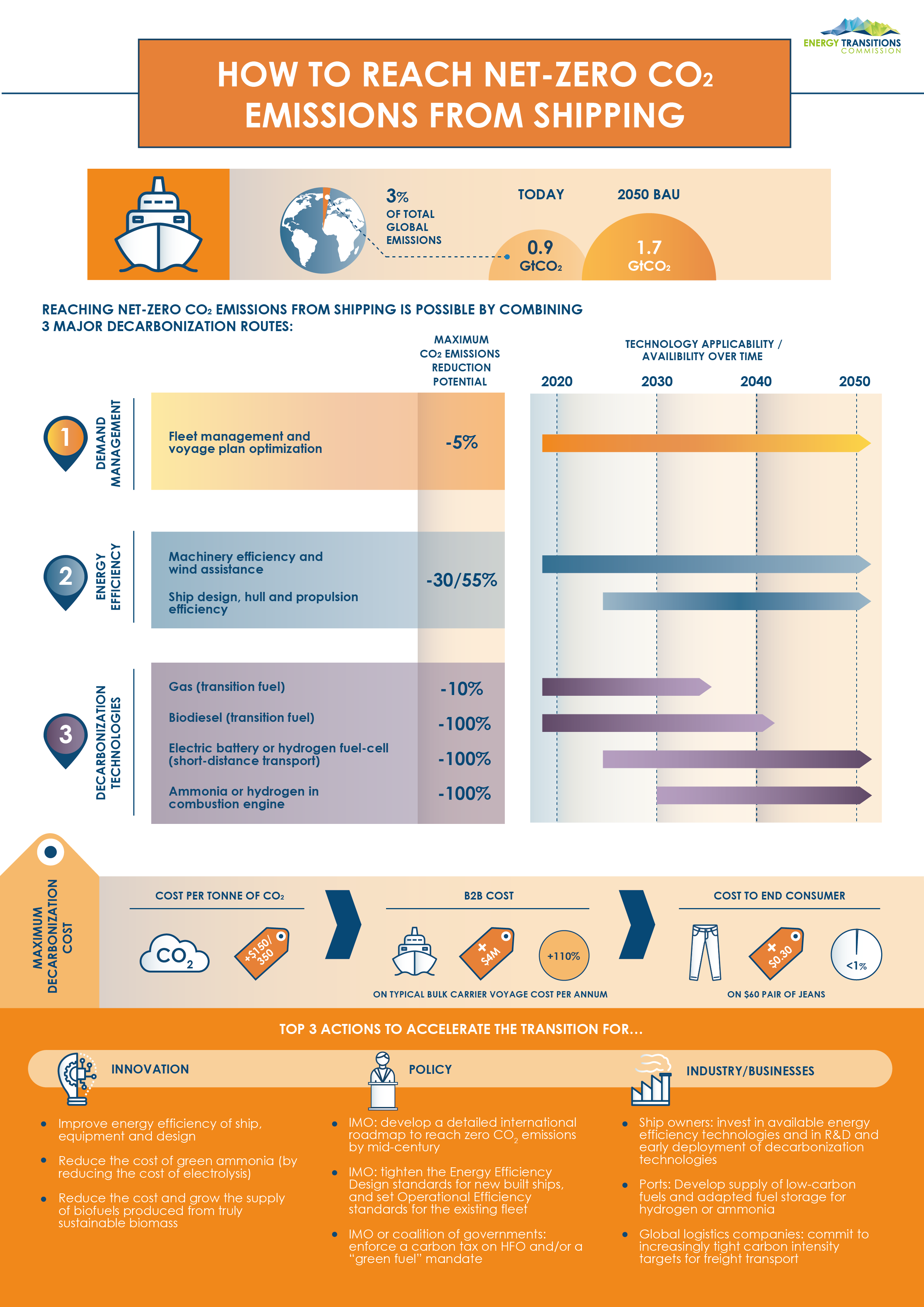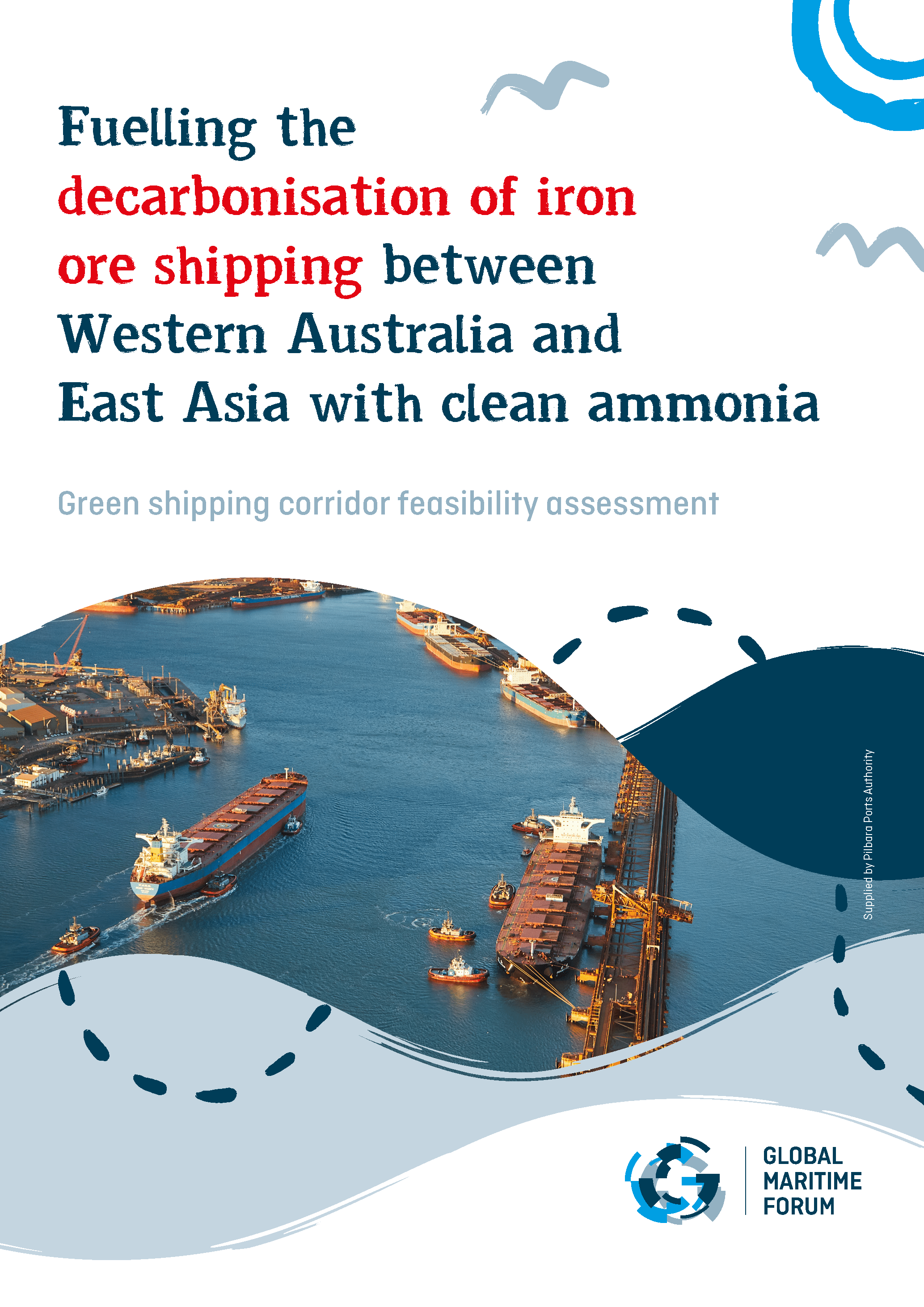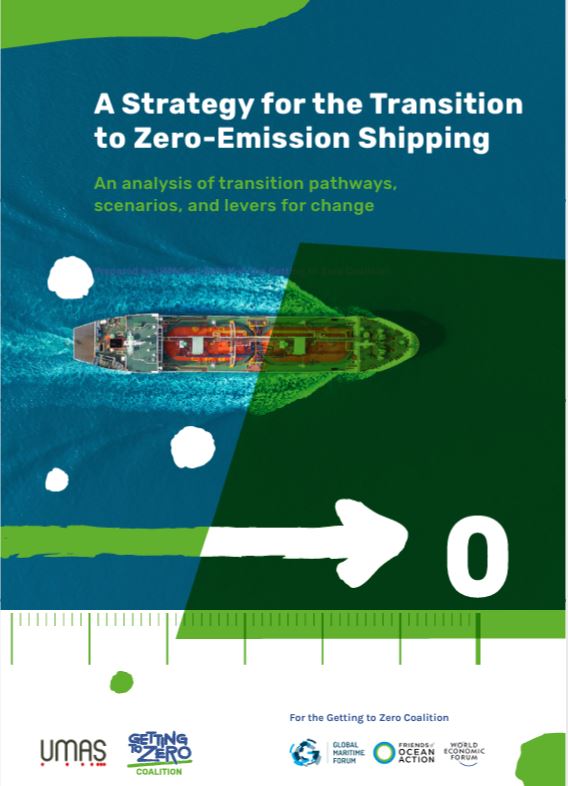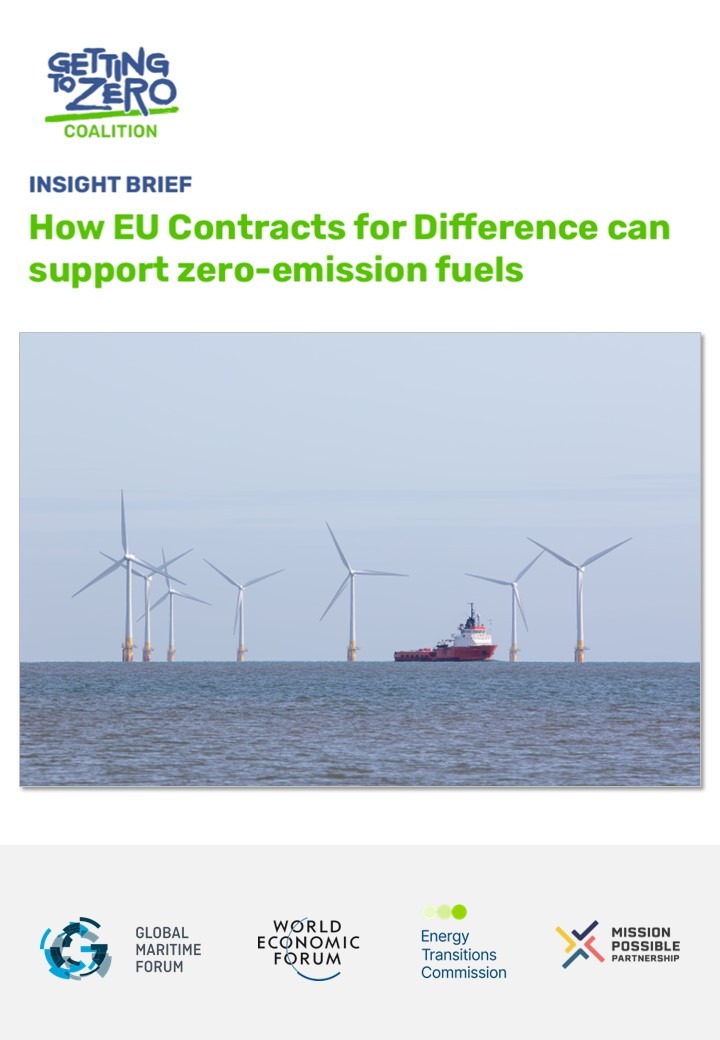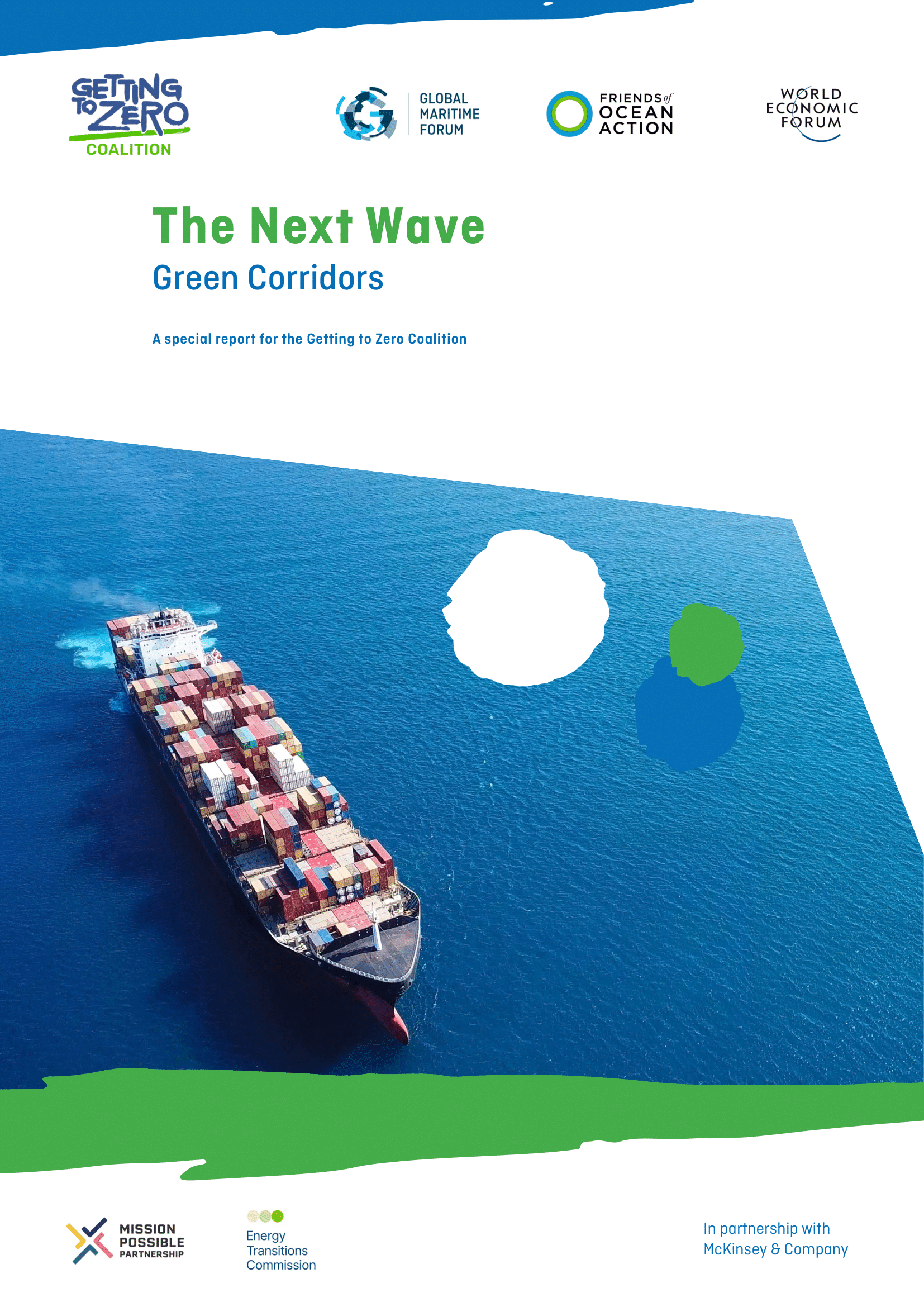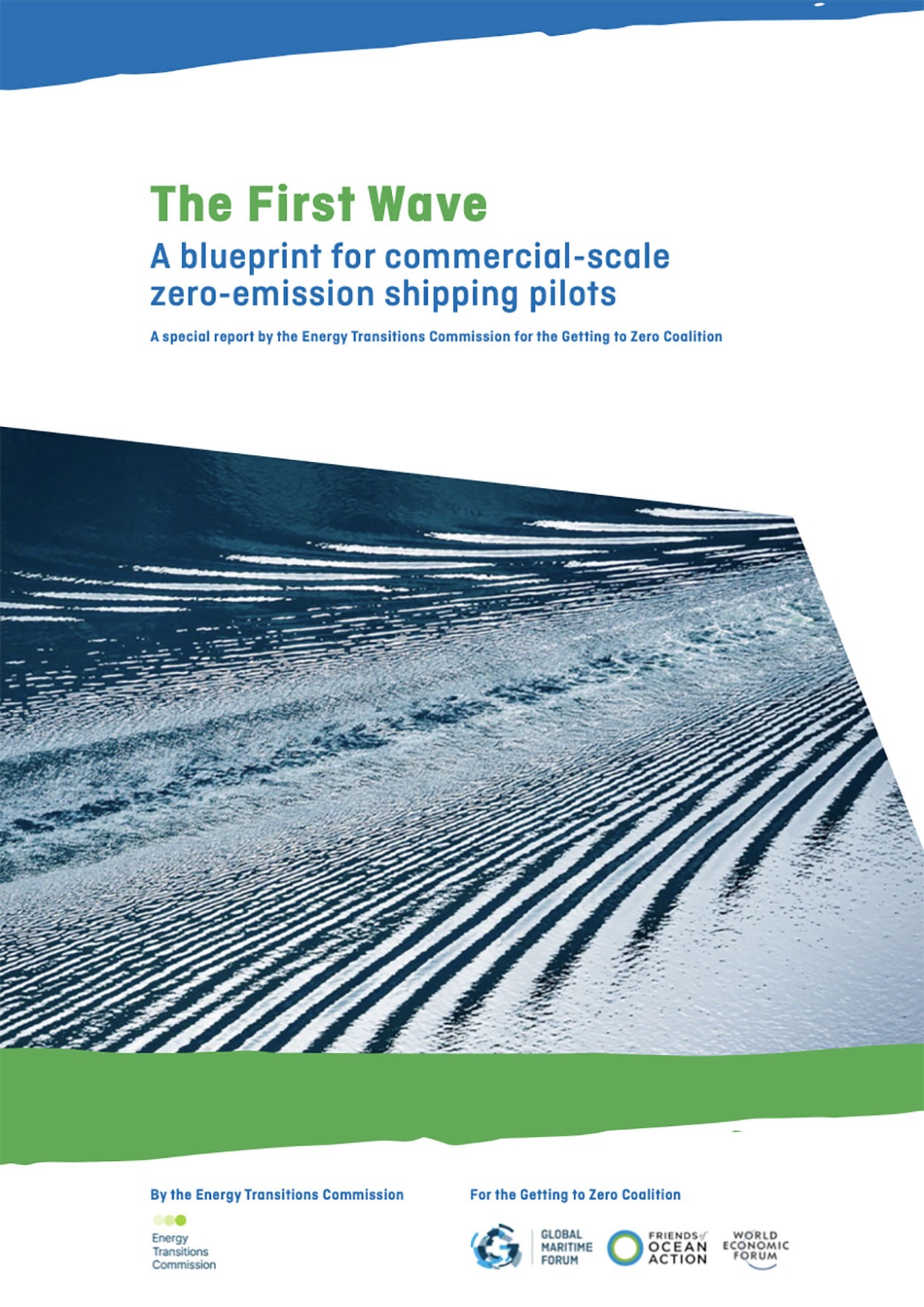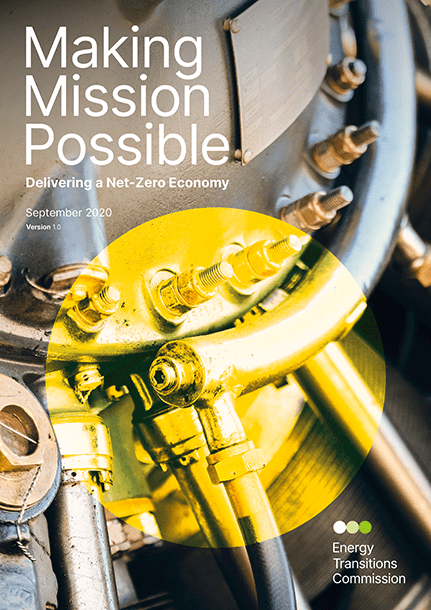Shipping
Emissions from shipping currently amount to circa 1Gt CO2 per annum accounting for almost 3% of total global emissions. Technology solutions exist to reach zero emissions by mid-century, but they are unlikely to be scale up before the 2030s. High-cost of low-carbon technologies, long asset replacement cycles, together with the fragmented and international nature of the industry, make shipping the most difficult transport mode to decarbonise.

Zero-carbon fuel options fall into two main categories: those based on green hydrogen (hydrogen and ammonia, used in fuel cells or in internal combustion engines) and those based on biomass (biofuels and bio-methanol). In the long term, ammonia is likely to be the most cost-effective option for long distances, while some short-haul segments of the fleet could switch to electric motors.
A shift to zero-emissions technologies could double the cost of shipping, but would add less than 1% to the price of internationally-traded end consumer products. Due to the competitive nature of the shipping industry, the development of a voluntary premium “green shipping” market should underpin the first wave of projects. International Maritime Organisation’s regulations will then be essential to scale up decarbonisation efforts.
In the context of the Mission Possible Platform, the ETC is a knowledge partner of the Getting to Zero Coalition, convened by the Global Maritime Forum. The coalition brings together stakeholders from across the shipping value chain and aims to get commercially viable zero-emissions vessels into operation by 2030. Our work focuses on how to incentivise first movers, through collaborations between fuel providers, bunkerers, ports, ship builders, ship owners, shippers, and consumer product manufacturers.


